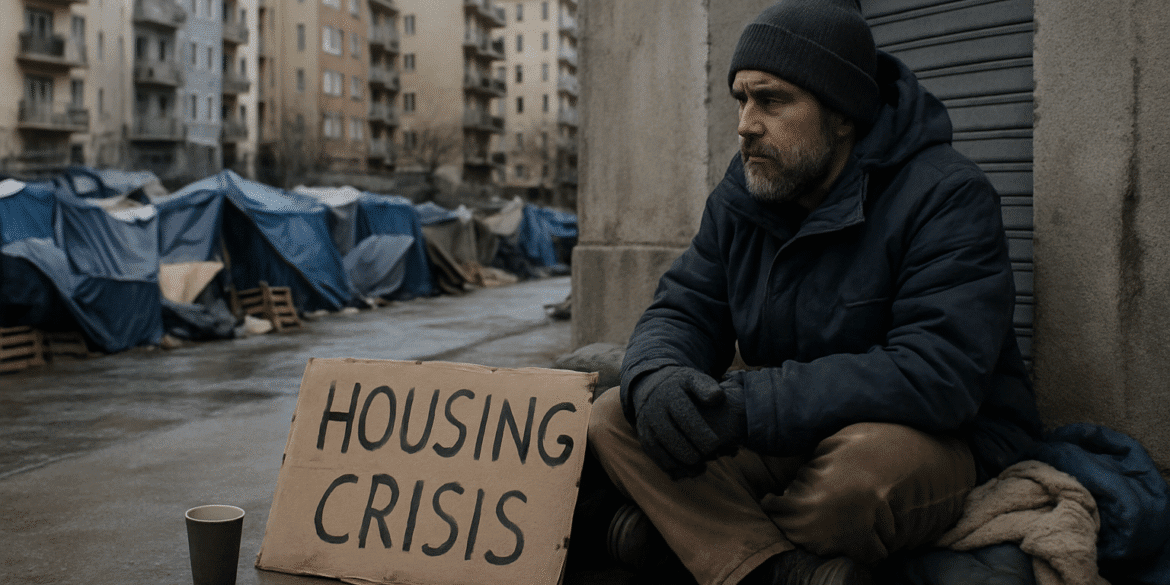California’s housing crisis has been a focal point for years, with skyrocketing rents and home prices placing immense strain on residents, particularly those with lower incomes. On June 3, 2025, the California State Senate passed Senate Bill 79 (SB 79), a significant piece of legislation that promises to address this ongoing issue. Authored by Senator Scott Wiener (D-San Francisco), SB 79 is designed to streamline the construction of housing near public transit hubs and reduce the barriers to creating dense, affordable housing near some of California’s busiest areas. The bill, which has already sparked both support and opposition, is seen as a bold step towards solving the state’s deepening housing shortage.
Aiming to Promote Housing Near Transit Hubs
The basic premise of SB 79 is simple: increase the supply of housing in areas where it is most needed. With California’s population growing at a rapid pace, the demand for housing is outpacing supply. In cities like San Francisco, Los Angeles, and San Diego, real estate markets have become prohibitively expensive, especially for working-class families. As the price of housing continues to climb, more people are forced to live further away from their jobs, leading to longer commutes, higher carbon emissions, and greater reliance on automobiles.
SB 79 aims to address this problem by incentivizing the development of housing near major transit stations. The bill allows for higher-density housing construction in transit-adjacent areas and near transit hubs such as BART and Caltrain stations in the Bay Area or Metro stops in Los Angeles. This strategy of creating “transit-oriented development” (TOD) is designed to reduce the need for car use and encourage residents to use public transportation, thus lowering carbon emissions and reducing traffic congestion.
The bill’s primary provision is that cities within California will now have the ability to approve taller and denser buildings near transit areas, with fewer regulatory hurdles. For example, the bill allows up to seven-story residential buildings to be constructed in transit-adjacent areas. By bypassing local zoning laws that have historically made it difficult to build dense housing near transit corridors, SB 79 ensures that affordable housing can be built where there is already a robust transportation system in place.
In addition to permitting greater density, SB 79 provides incentives for affordable housing. Developers will be encouraged to include a certain percentage of low-income units in their projects, ensuring that the new housing stock is accessible to a range of income levels. Supporters of the bill argue that this will not only increase the housing supply but also help combat gentrification by ensuring that new housing benefits working-class families who have been priced out of California’s urban centers.
A Comparison to Other Transit-Oriented Developments
The idea behind SB 79 is modeled after successful transit-oriented development policies in other cities around the world. Cities like Hong Kong and Tokyo have long utilized this model, allowing for the construction of dense residential and commercial developments around key transit stations. These developments not only create housing but also generate revenue that helps fund public transportation systems. For example, the Hong Kong MTR system operates at a profit due to its integration of residential and commercial development projects around its stations. These developments reduce the need for long commutes and allow for more efficient use of land.
California, particularly in cities like San Francisco, has faced challenges in implementing TOD because of restrictive zoning laws and intense local opposition to high-density development. SB 79 aims to address this by providing statewide support for such projects, while still allowing cities to maintain local control over their land use.
By fostering more development near public transportation, SB 79 seeks to create more sustainable cities, reduce urban sprawl, and ensure that California’s housing needs are met without further expanding the urban footprint. Furthermore, SB 79 recognizes that increased population density can be an asset in addressing environmental and infrastructure challenges. Dense urban environments tend to be more energy-efficient, as they reduce the overall need for transportation and infrastructure.
Opposition and Concerns
Despite the bill’s popularity among housing advocates, there has been significant opposition from certain local governments, community groups, and environmental organizations. Many argue that increasing the density of housing in already crowded areas could result in overcrowding and strain existing infrastructure. Some fear that SB 79 could lead to a dramatic shift in the character of established neighborhoods, particularly single-family residential zones that are still prevalent in areas like Los Angeles and the Bay Area.
Local officials in some cities argue that they should retain control over zoning laws, as they best understand the needs of their communities. Additionally, some critics suggest that without sufficient investment in public services and infrastructure, high-density housing projects could lead to overcrowded schools, increased traffic, and environmental degradation.
Another major concern is the potential for gentrification. While SB 79 includes provisions for affordable housing, critics argue that the market-driven forces of development could push out low-income residents, especially in neighborhoods where the demand for housing is high. These critics worry that wealthy developers may prioritize luxury housing projects instead of the affordable units needed to address California’s homelessness crisis.
Despite these concerns, SB 79 has garnered significant support from environmentalists, transit advocates, and affordable housing groups. Supporters argue that without a comprehensive, statewide approach to tackling California’s housing shortage, the crisis will continue to worsen, leaving millions of residents struggling to find affordable places to live.
Next Steps for SB 79
Having passed the State Senate with a 21-13 vote, SB 79 now moves to the State Assembly, where it will be debated and amended before a final vote. If passed by the Assembly, the bill will be sent to Governor Gavin Newsom for his signature. The governor has indicated that he supports efforts to address the housing crisis and has been vocal about his commitment to tackling California’s affordability challenges.

